Dinocaridids
|
Dinocaridids are an extinct group of "stem-arthropods" (more closely related to true arthropods than to any other phyla). They had segmented bodies with a series of paired swimming lobes, compound eyes, and a pair (usually) of large, segmented feeding appendages.
Anomalocaris was the largest predator of its time, which was the middle Cambrian Period.
Based on Burgess Shale, Canada
Cambrian Period, 530 Ma
Museum of the Rockies, MT
|
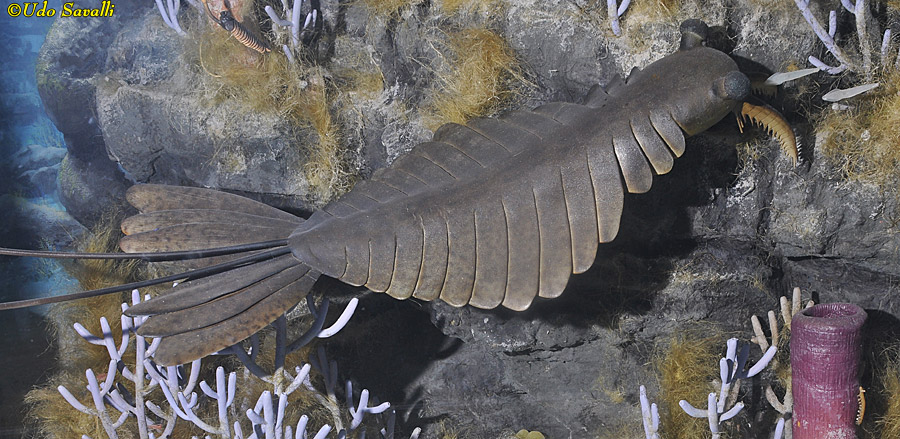
|
|
Trilobites
|
Trilobites are an extinct group of arthropods, so named because their body is divided lengthwise into 3 lobes (right, middle, left). Their bodies also usually have 3 distinct regions, the head, thorax, and tail (pygidium). Trilobites were most diverse in the Cambrian and Ordovician Periods and were abundant up through the end of the Devonian. After that they were rare until their final extinction at the end of the Permian.
Olenellus gilberti dates to the early Cambrian Period.
Pioche Formation, Lincoln Co., Nevada
Early Cambrian, 530 Ma
Denver Museum of Science & Nature
|
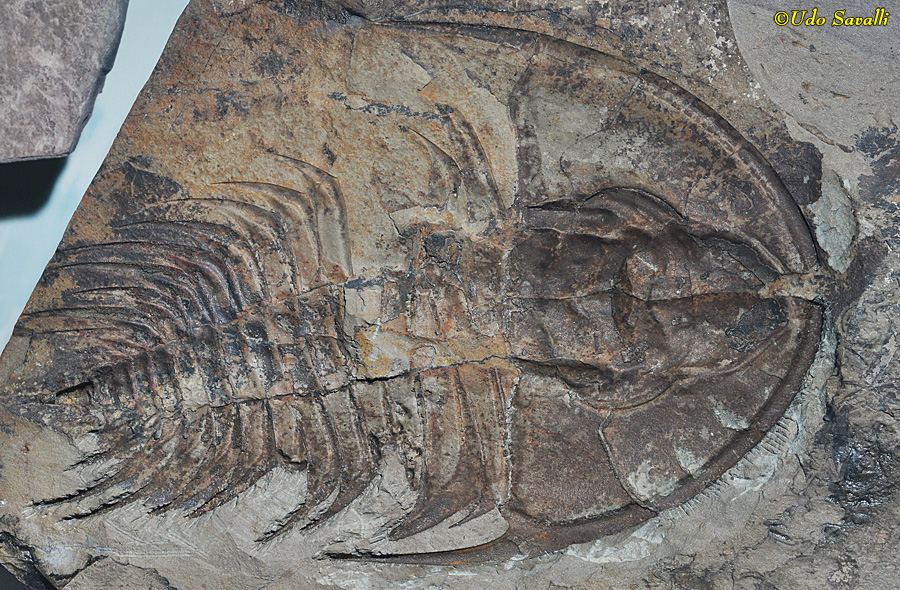
|
|
|
Acadoparadoxides briareus.
Jbel Wawrmast Formation, Anti-Atlas Mountains, Morocco
Middle Cambrian, 510 Ma
Black Hills Institute Museum, South Dakota
|
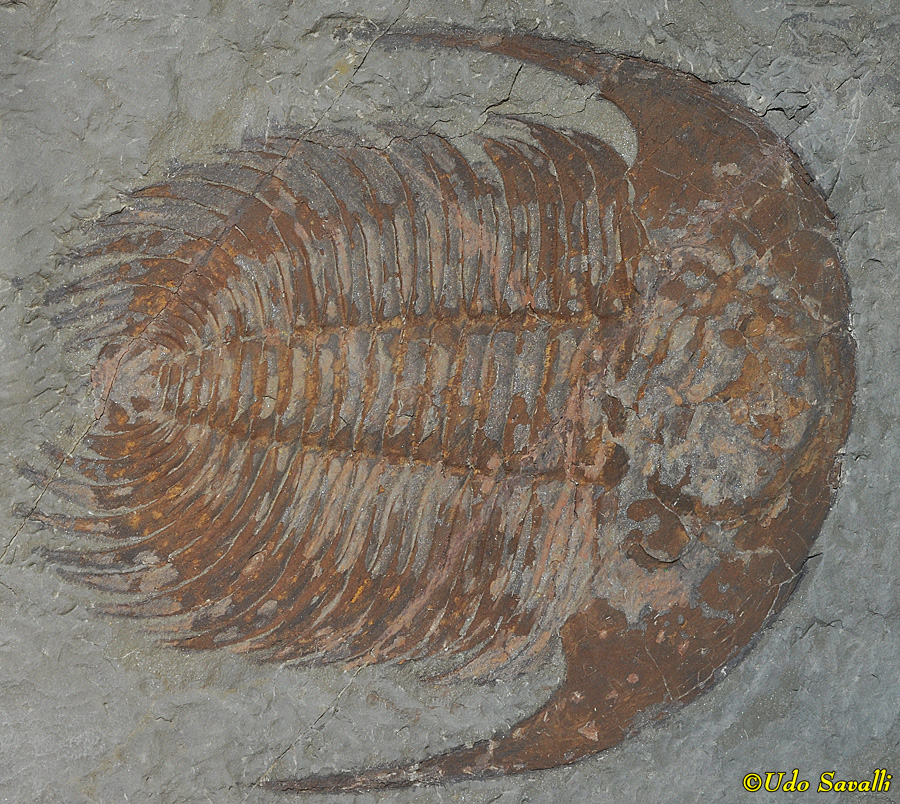
|
|
|
Modocia typicalis.
Utah
Cambrian Period
Black Hills Institute Museum, South Dakota
|
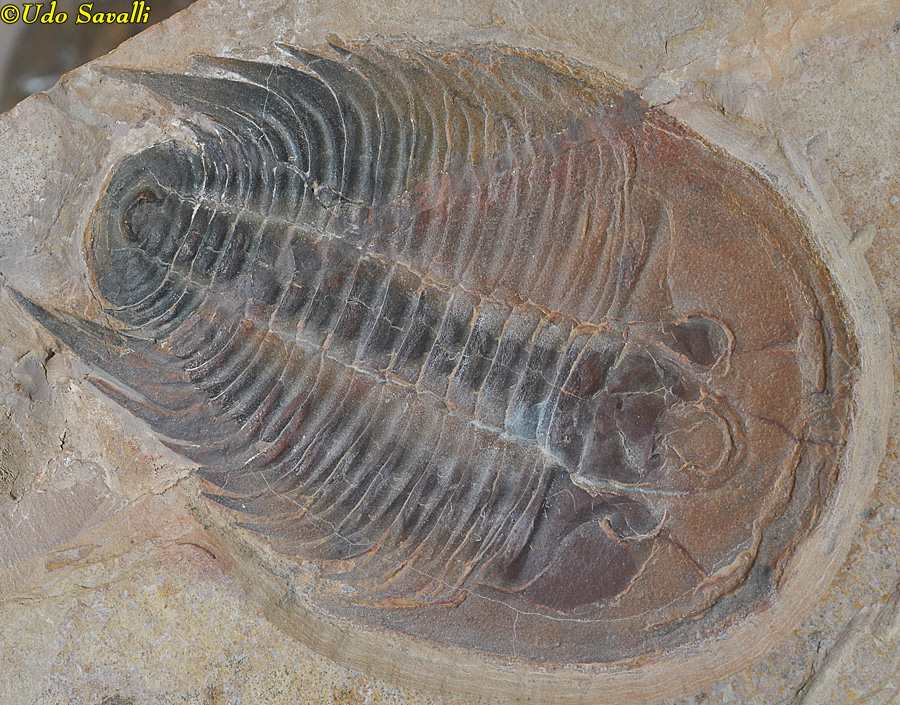
|
|
|
Tiny trilobites such as this Ptychagnostus sp. may have been pelagic, swimming in the water column above the bottom.
House Range, Millard Co., UT
Middle Cambrian Period, Wheeler Formation
personal collection
|
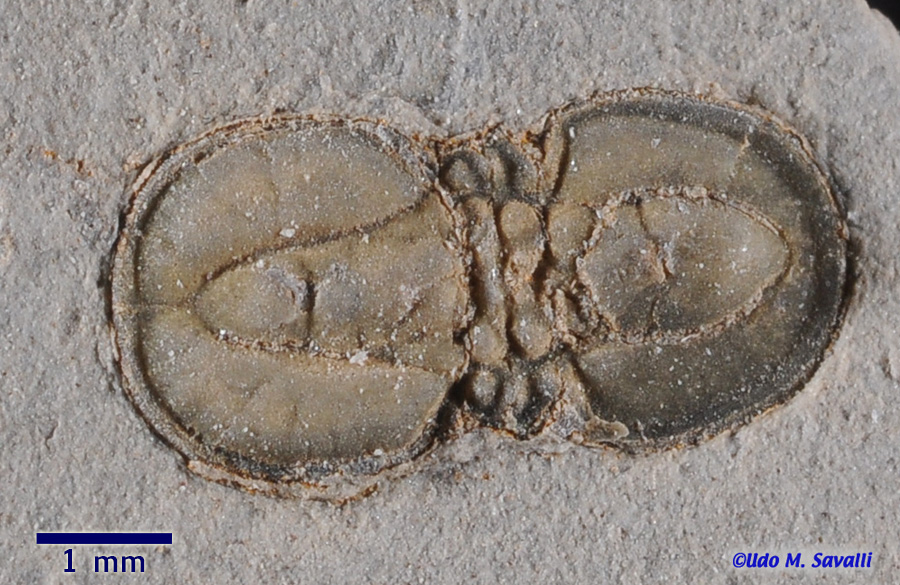
|
|
|
Isotelus sp.
Ontario
Ordovician Period
Black Hills Institute Museum, South Dakota
|
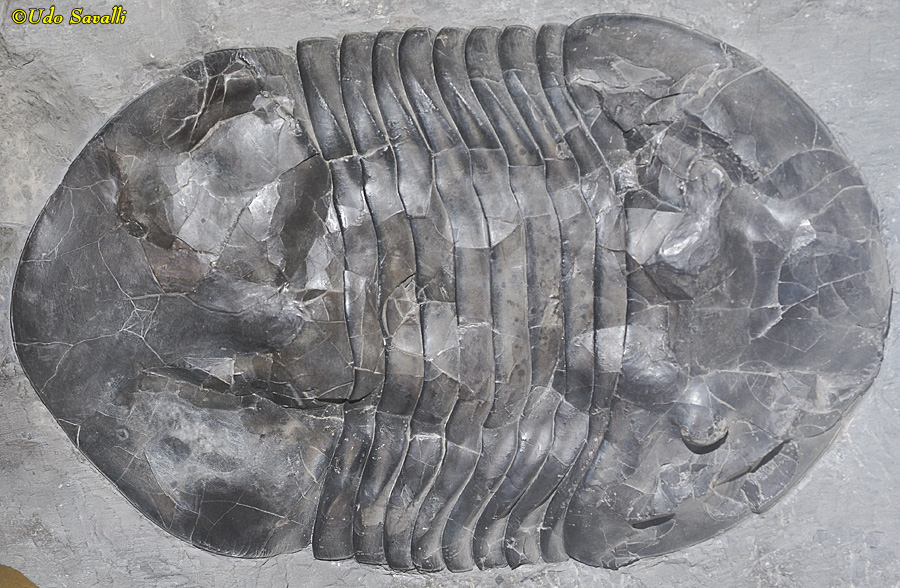
|
|
|
Stalk-eyed trilobites such as this Neoasaphus kowalewskii may have buried themselves in the mud with just their eyes sticking out.
Wolchow River, Russia
Middle Ordovician Period
Black Hills Institute Museum, South Dakota
|
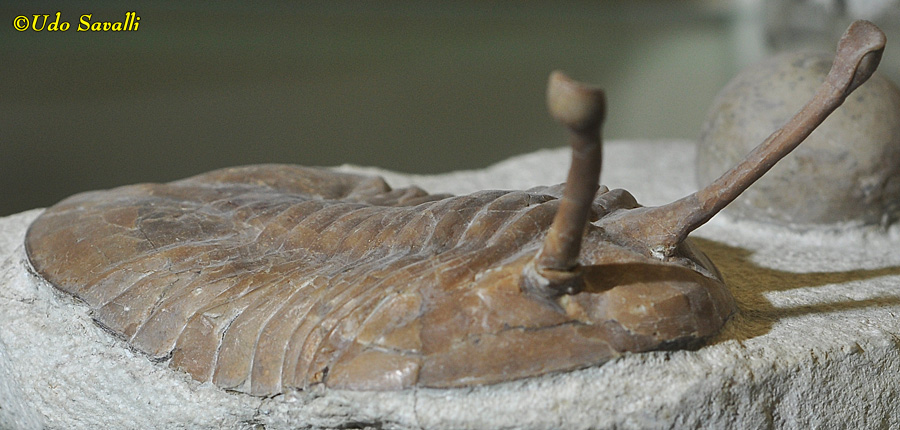
|
|
|
Dikelokephalina sp. mass death assemblage.
Morocco
Early Ordovician Period, 475 Ma
Wyoming Dinosaur Center
|
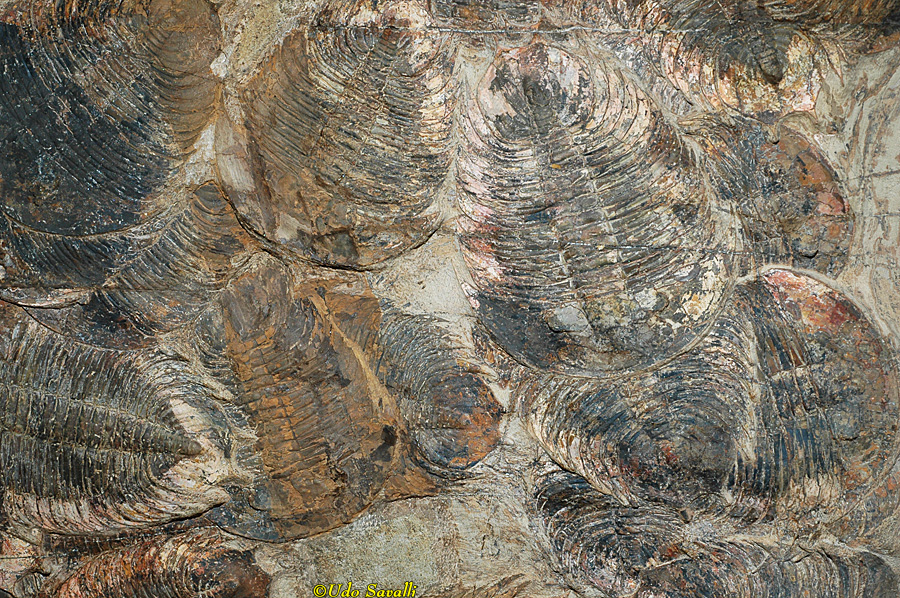
|
|
|
Homotelus bromidensis mass death assemblage.
Ordovician Period
Black Hills Institute Museum, South Dakota
|
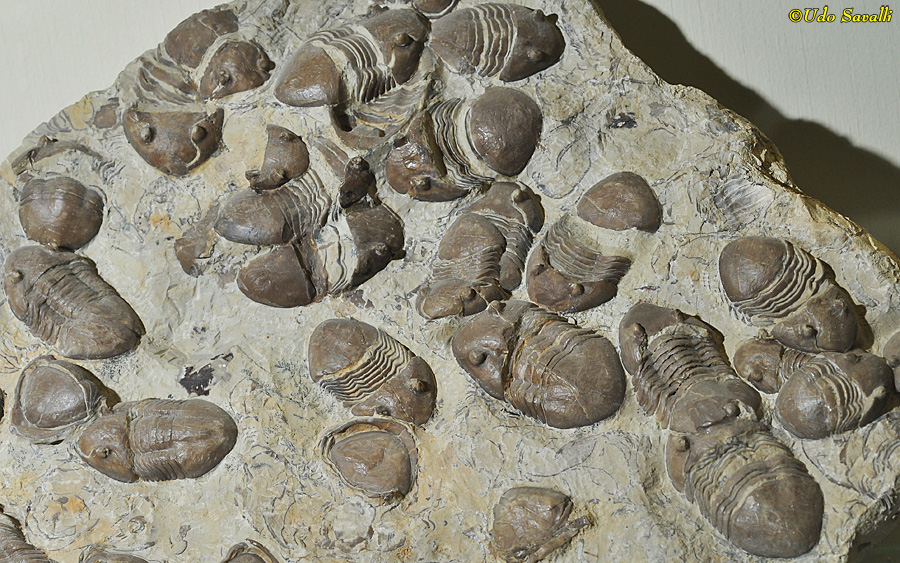
|
|
|
Phacops rana death assemblage.
Sylvania, OH
Silica Shale; Middle Devonian Period
Museum of Ancient Life, Utah
|
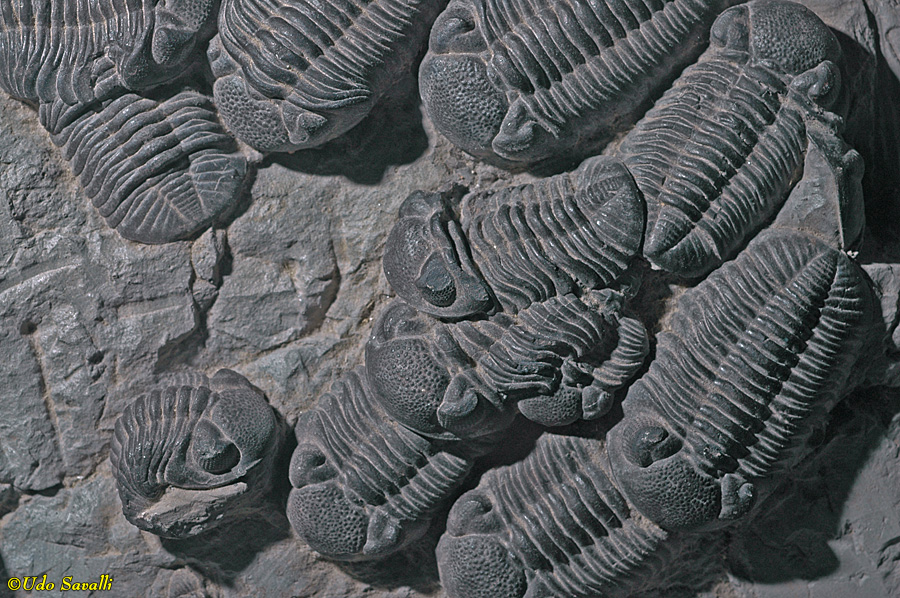
|
|
|
Burmeisterella sp.
Morocco
Early Devonian Period
Museum of Ancient Life, Utah
|
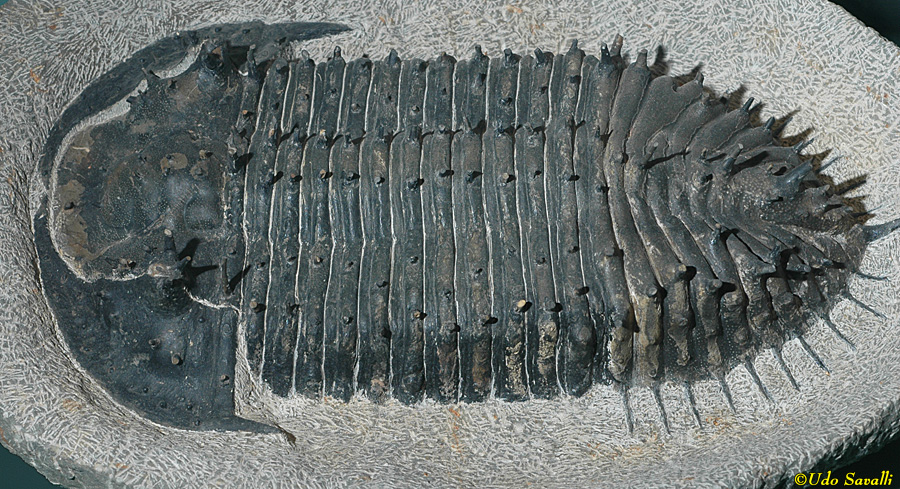
|
|
|
Some trilobites, especially during the Devonian Period, developed elaborate horns and spines, presumably for defense. This is Dicranurus monstrosus.
Morocco
Middle Devonian Period
Museum of Ancient Life, Utah
|
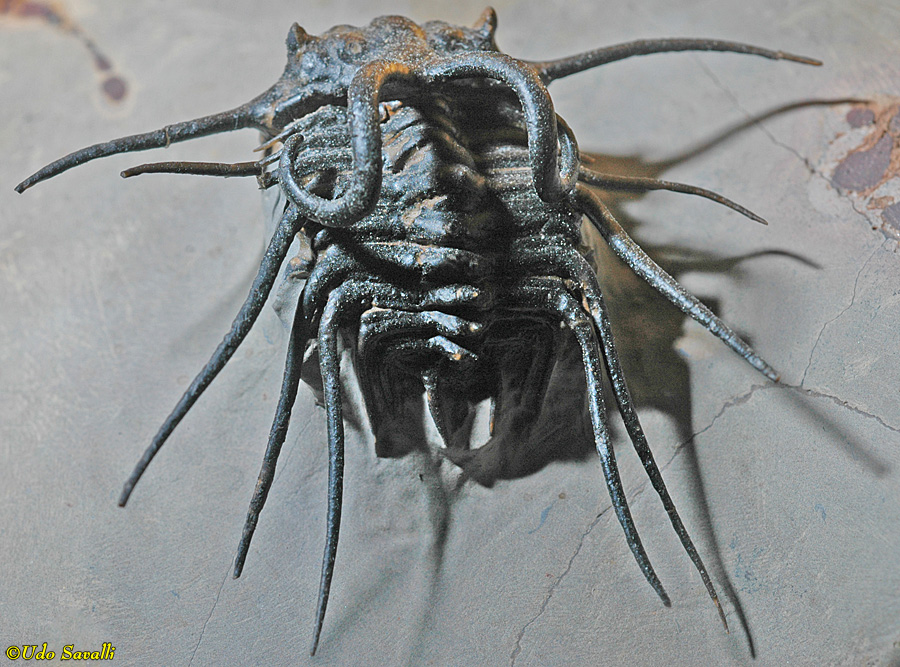
|
|
|
Psychopyge sp. The function of its elongated "snout" is uncertain, but may have had a sensory function.
Morocco
Devonian Period
Museum of Ancient Life, Utah
|
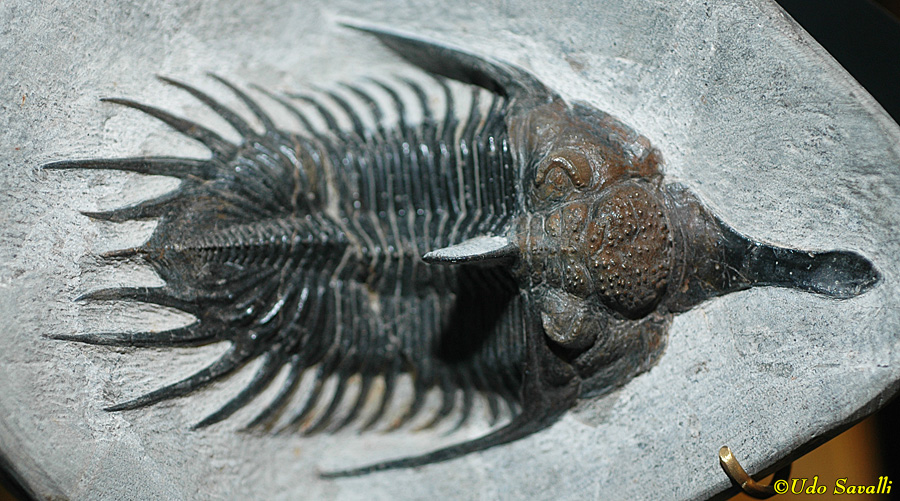
|
|
|
The trident horns of Walliserops trifurcates may have functioned as sensory structures, defense, or in male-male combat.
Morocco
Devonian Period, 375 Ma
Wyoming Dinosaur Center
|
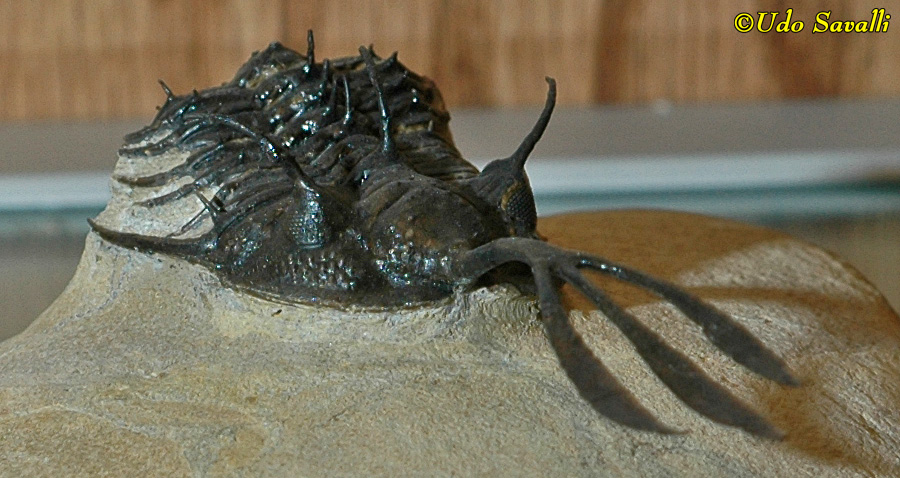
|
|
|
Silurian trilobites, including Gravicalymene celebra (far left) and Bumastus ioxus (top left)
Middle Silurian Period, 425 Ma; Wisconsin
Denver Museum of Science & Nature
|
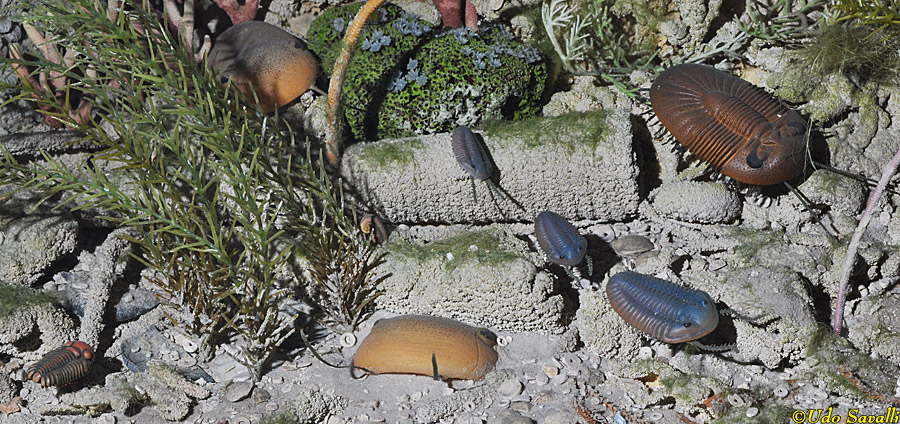
|
|
|
Life model of the trilobite Olenoides sp.
Cambrian Period
Museum of Ancient Life, Utah
|
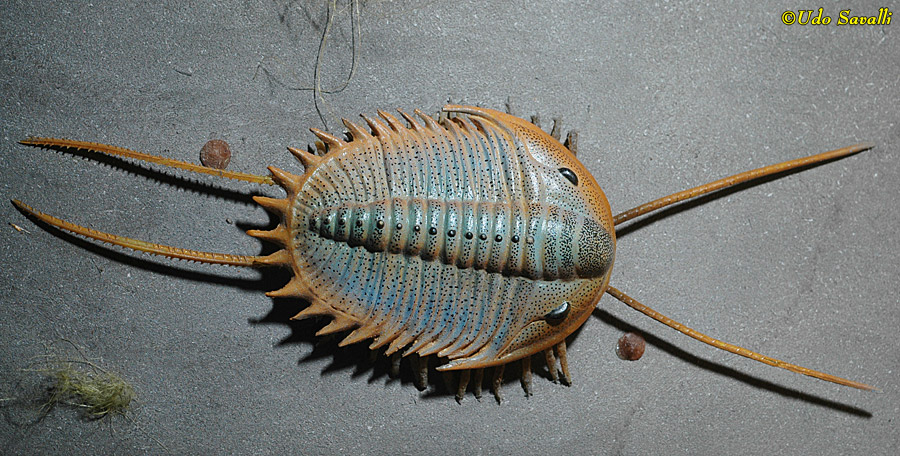
|
|
|
Life modelsof the trilobite Phacops rana, one of which is enrolled.
Middle Devonian Period; Ohio
Museum of Ancient Life, Utah
|
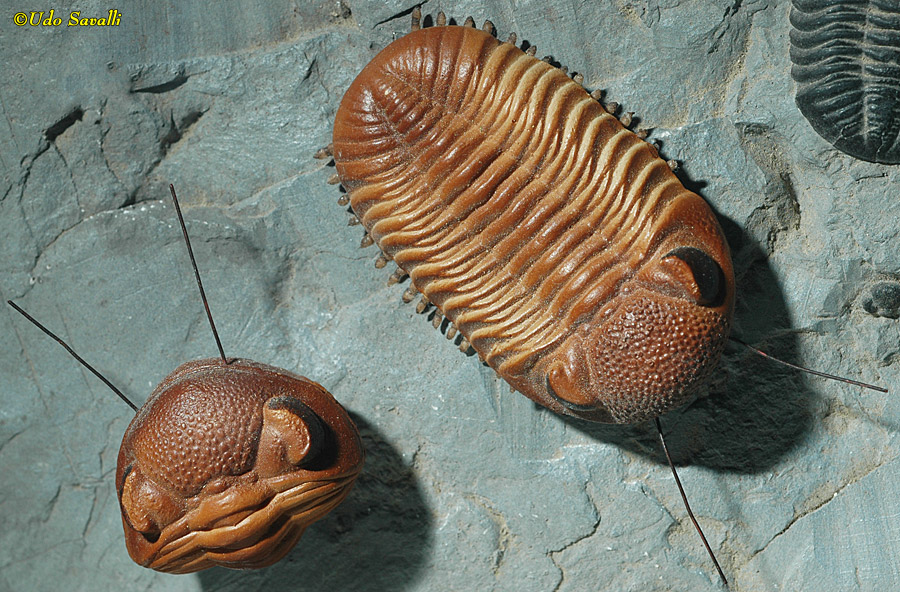
|
|
Chelicerates
|
The chelicerates include modern spiders, mites, scorpions and their relatives. Also included are the horseshoe crabs, which are not true crabs (which are in the Class Crustacea, below). Modern horseshoe crabs have changed very little from their ancestors, such as this Mesolimulus waichi
Solnhofen Limestone, Germany
Late Jurassic, Kimmeridgian Stage
Black Hills Institute Museum, South Dakota
|
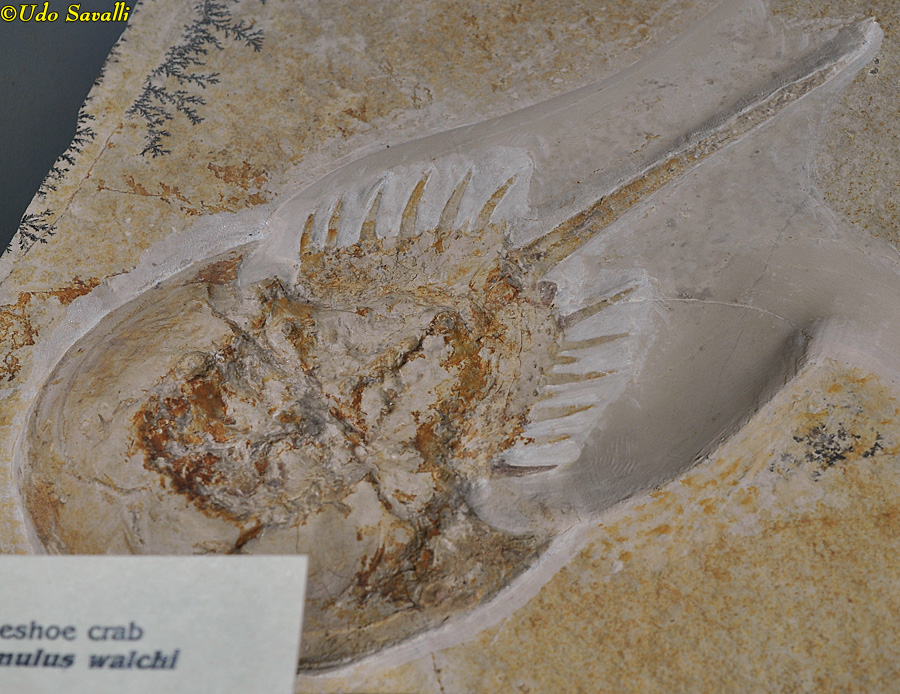
|
|
|
Sea scorpions, such as this Eurypterus lacustrus, are not true scorpions and instead are more closely related to horseshoe crabs. Their relatives may have been some of the first animals to walk on land.
Williamsville Limestone, Ontario
Silurian Period, Niagran Stage
Black Hills Institute Museum, South Dakota
|
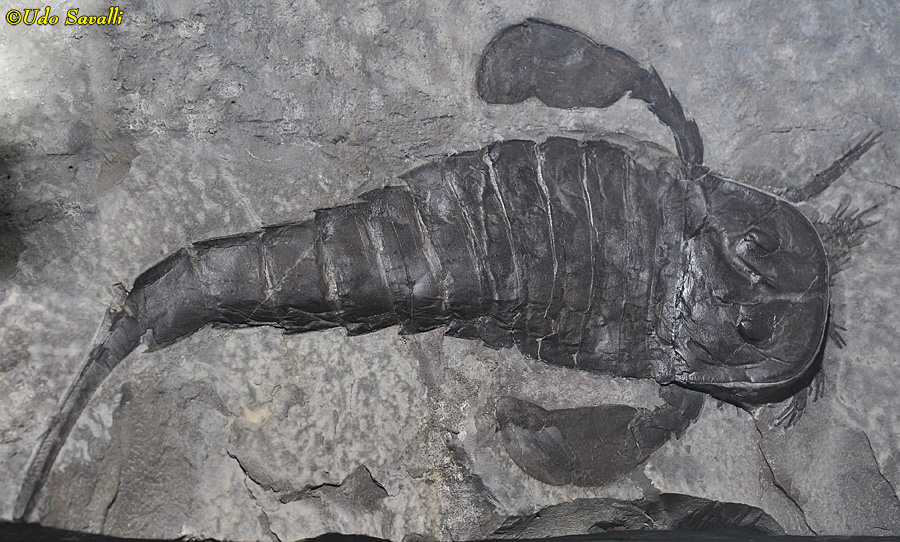
|
|
|
Sea scorpions, Eurypterus remipes, group.
Waterlime Formation, Herkimer, NY
Silurian Period
Black Hills Institute Museum, South Dakota
|
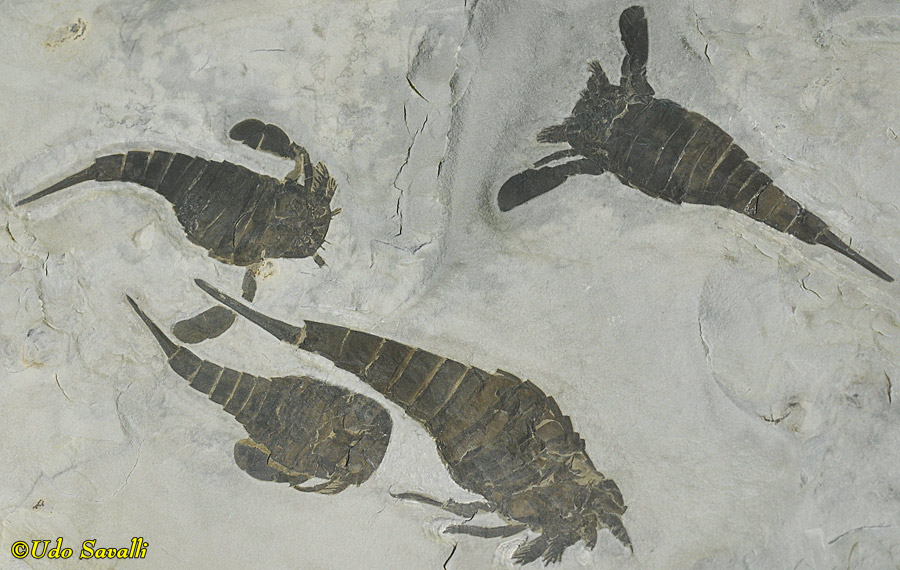
|
|
|
Some sea scorpions, such as this Pterygotus cobbi (cast), reached enormous size, to 1.7m long or more.
Bertie Waterlime Formation, Ilion, Herkimer Co., NY
Silurian Period
Black Hills Institute Museum, South Dakota
|

|
|
|
Sea scorpion, Eurypterus remipes, model.
Late Silurian Period
Museum of Ancient Life, UT
|
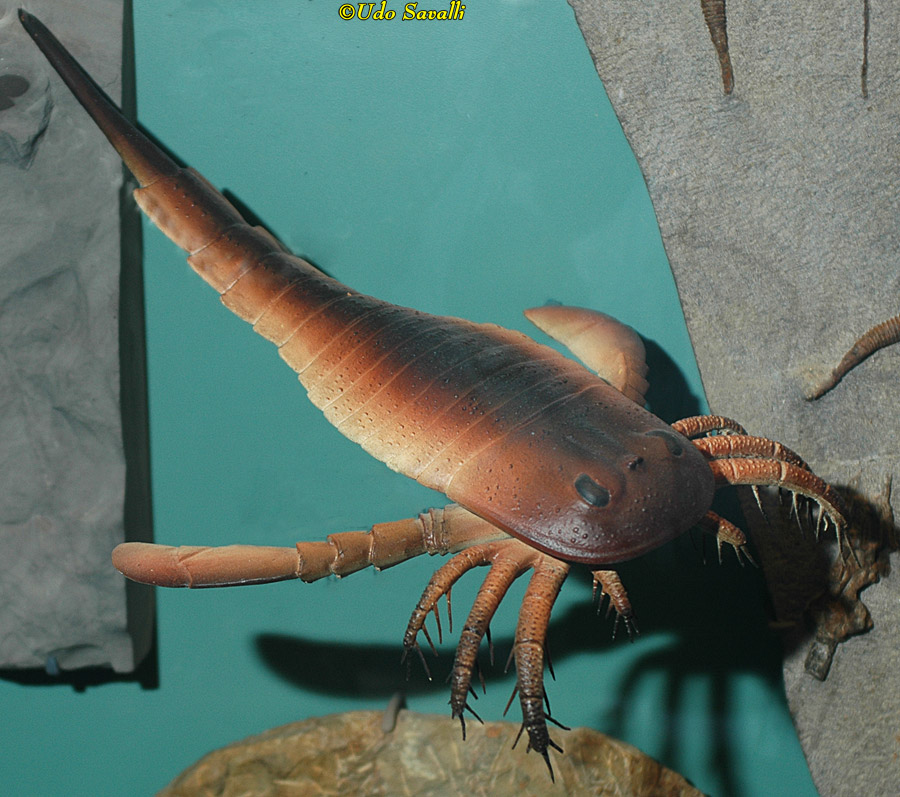
|
|
|
Pterygotid sea scorpion model (genus not specified).
Denver Museum of Science & Nature
|
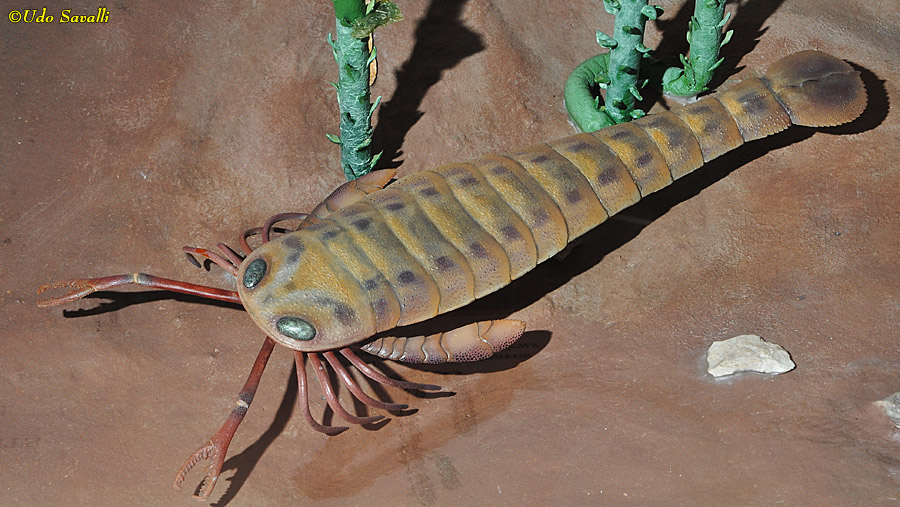
|
|
Myriopods — Centipedes & Millipedes
|
Centipedes & millipedes (and their relatives) are elongated arthropods with many pairs of legs along their entire length. While centipedes are predators, millipedes, such as this unidentified species, mostly eat decaying plant matter.
Green River Formation, WY
Eocene Epoch, 48 Ma
Fossil Butte National Monument
|
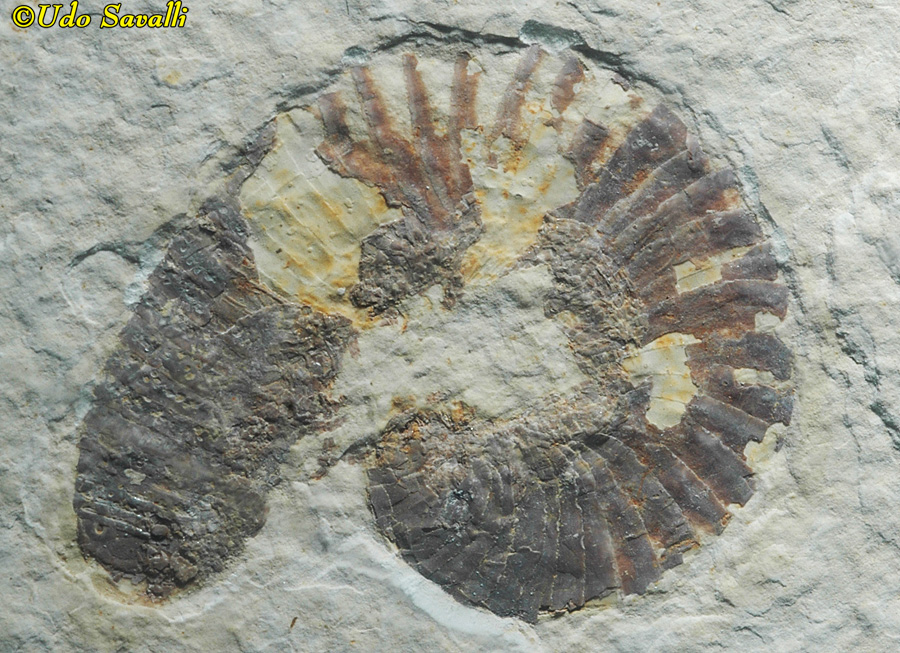
|
|
|
Arthropleura was a giant millipede, and the largest known terrestrial invertebrate, with the largest species reaching 2.5 m long. It was an herbivore like modern millipedes.
Known from North America & Europe
Carboniferous to Permian Periods, 340-280 Ma
Museum of Ancient Life, UT
|
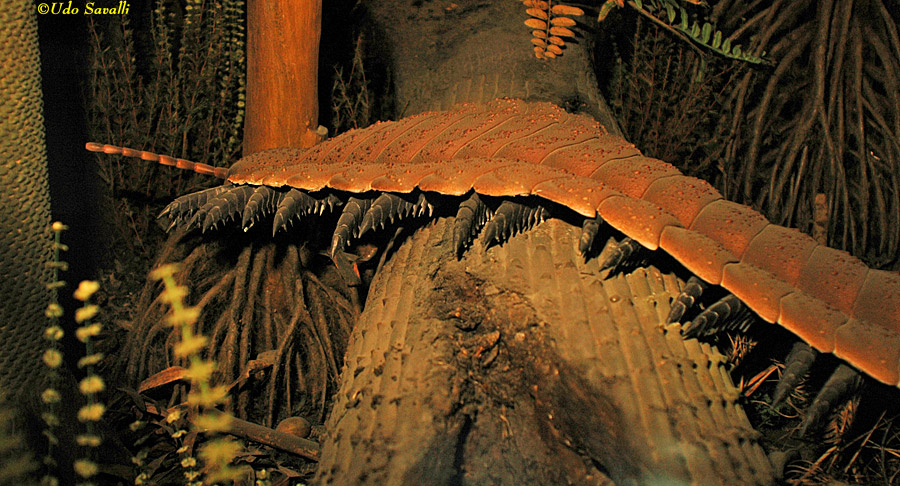
|
|
Crustaceans
|
Crustaceans are mostly aquatic invertebrates (but some, such as isopods, live on land) that include shrimp, crabs, and their relatives. This prehistoric lobster, Paleonephrops browni, is similar to modern species.
Bearpaw Shale, Montana
Late Cretaceous, Maastrichtian Stage
Black Hills Institute Museum, South Dakota
|
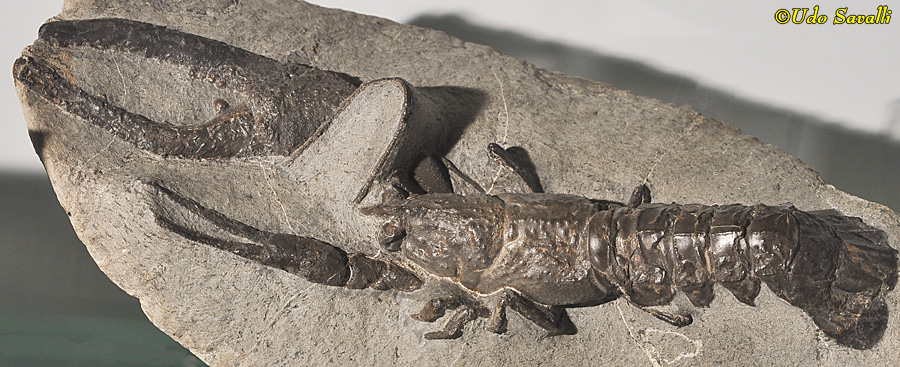
|
|
|
A crab, Avitelmessus grapsoideus.
Ripley Formation, MS
Late Cretaceous Period, 70 Ma
Denver Museum of Science & Nature
|
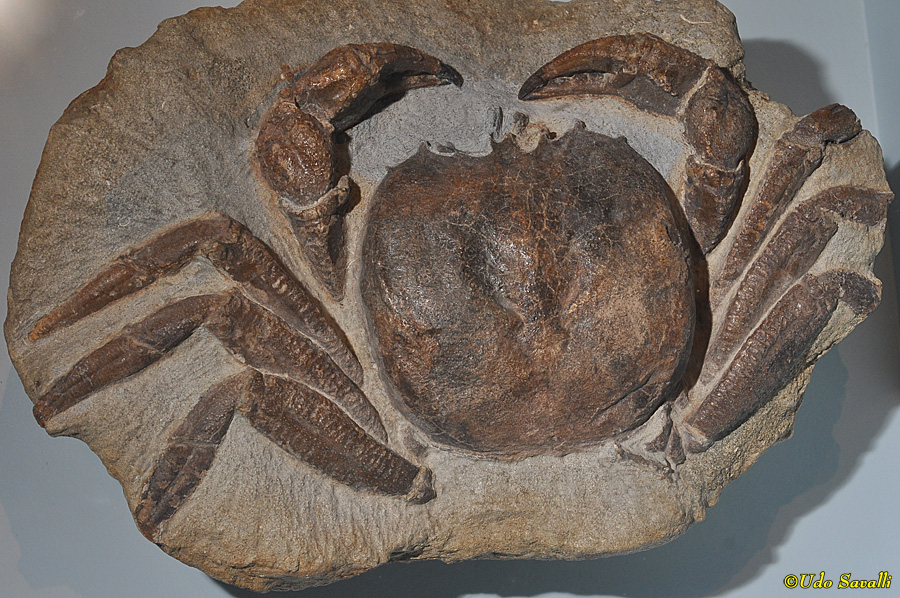
|
|
|
A shrimp, Aeger tipularius.
Solnhofen Limestone, Bayern, Germany
Late Jurassic, Kimmeridgian Stage
Black Hills Institute Museum, South Dakota
|
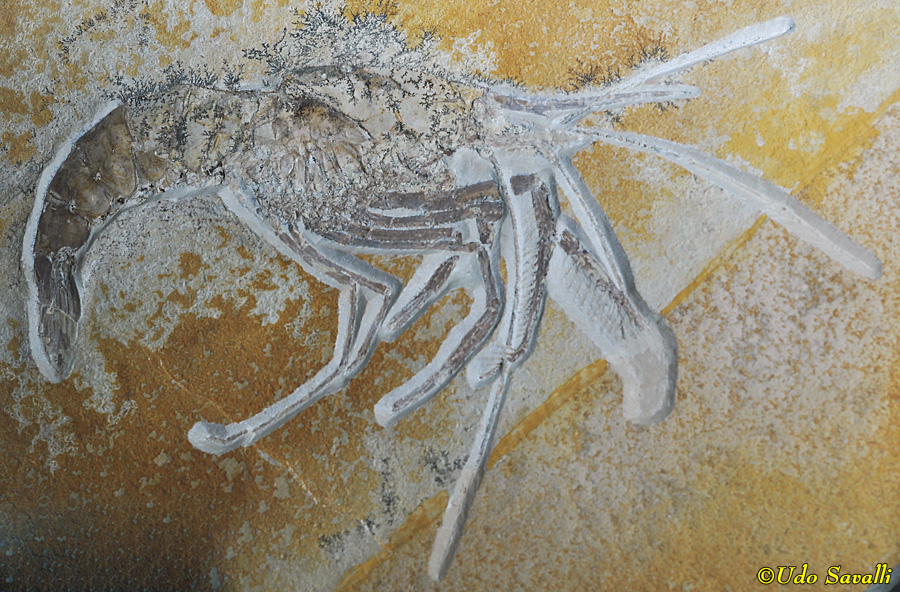
|
|
|
Eryon artiformis "lobster".
Solnhofen Limestone, Bayern, Germany
Late Jurassic, Kimmeridgian Stage
Black Hills Institute Museum, South Dakota
|
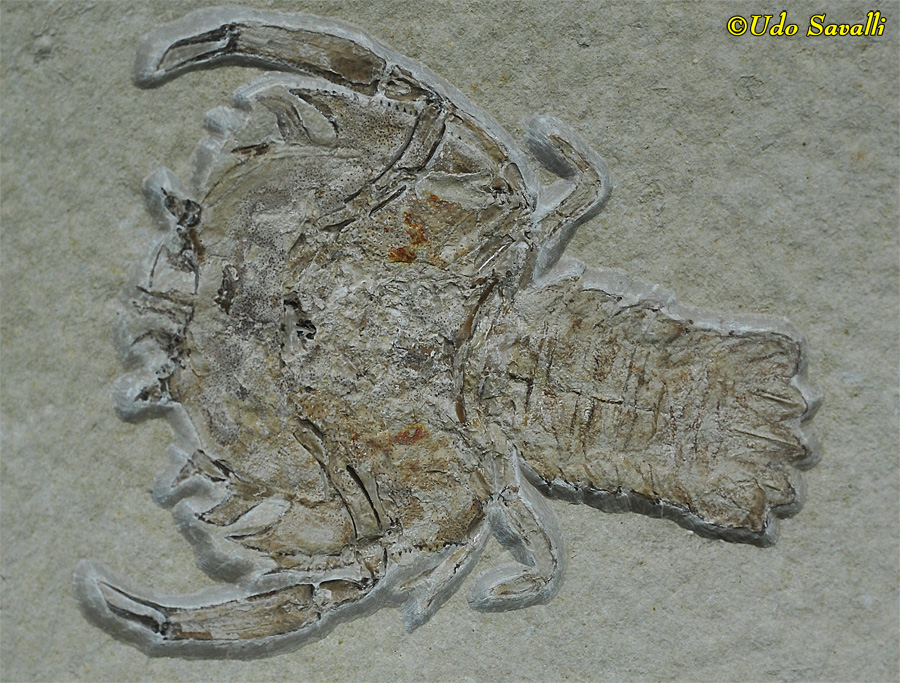
|
|
|
Pseudoarctolepis sp. is a phyllocarid, a group of simple filter-feeding crustaceans with a shell-like carapace.
Wheeler Shale, Utah
Middle Cambrian Period, 507 Ma
Museum of Ancient Life, Utah
|
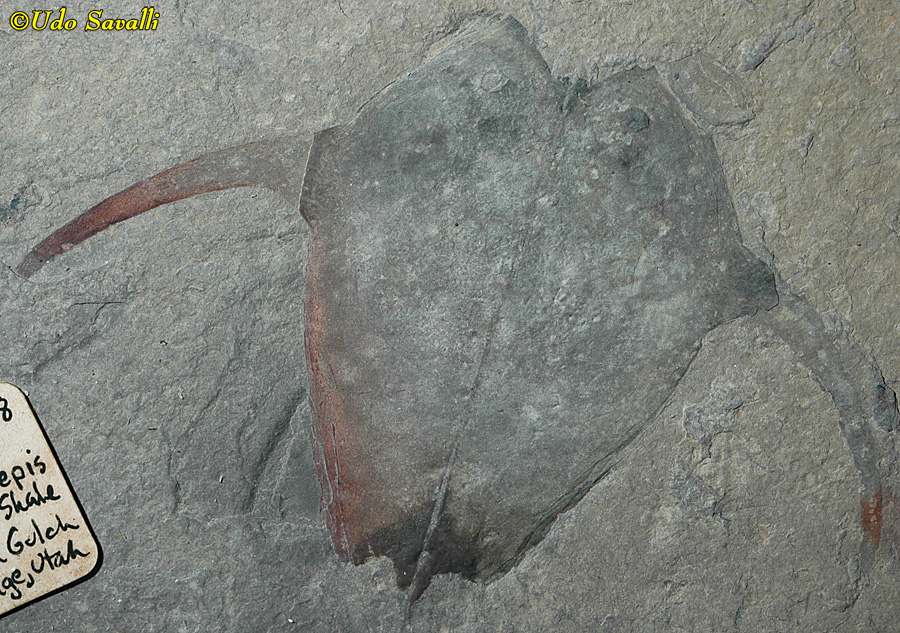
|
|
Insects
|
Insects are terrestrial arthropods that have mastered powered flight. In addition to (usually 2 pairs of) wings, they have 3 pairs of legs and a body divided into a head, thorax (with wings and legs) and an abdomen.
Dragonflies are relatively primitive insects.
Green River Formation, WY
Eocene Epoch, 48 Ma
Fossil Butte National Monument
|
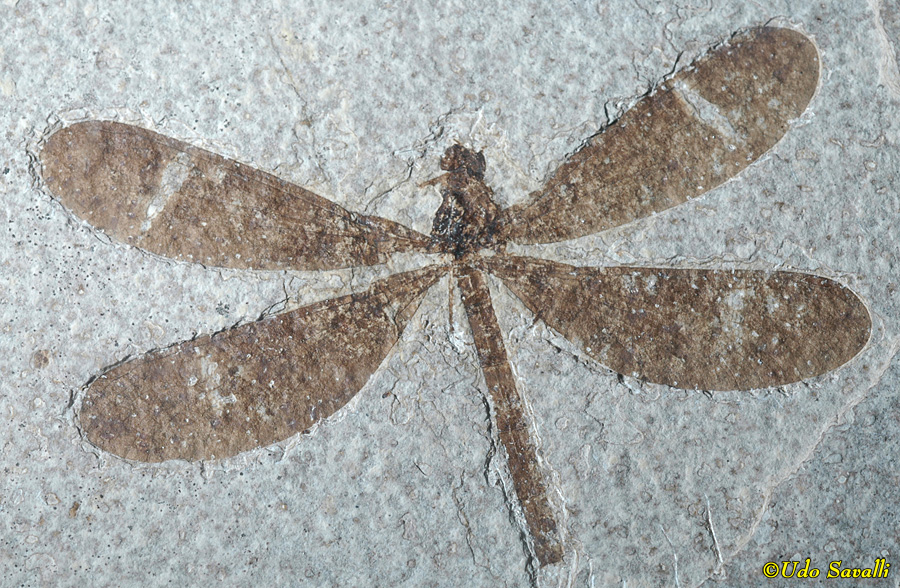
|
|
|
The dragonfly Anisophlebia helle.
Solnhofen Limestone, Bayern, Germany
Late Jurassic, Kimmeridgian Stage
Black Hills Institute Museum, South Dakota
|
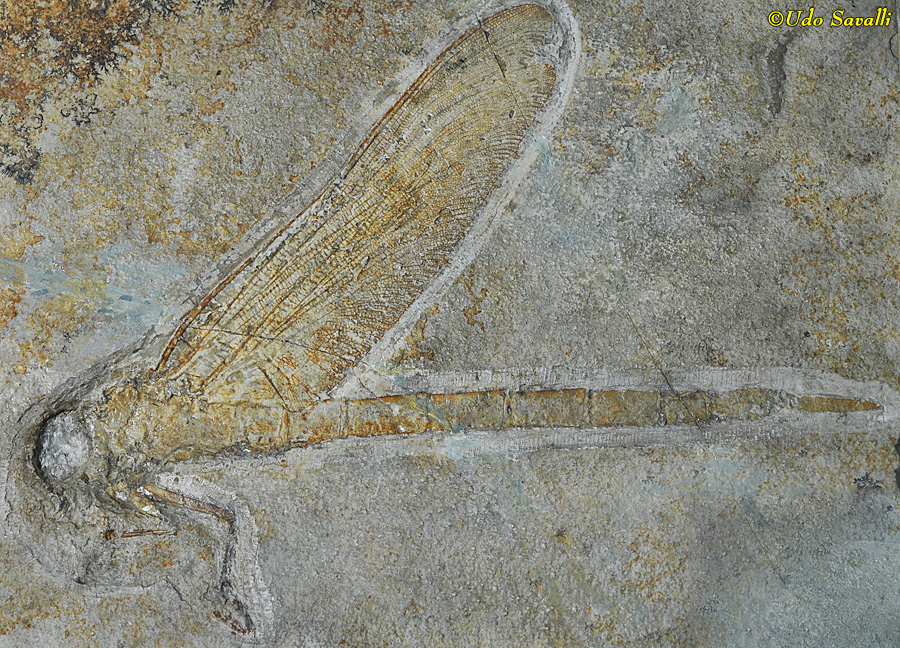
|
|
|
Water striders are insects that walk on top of ponds to capture floating prey.
Green River Formation, WY
Eocene Epoch, 48 Ma
Fossil Butte National Monument
|
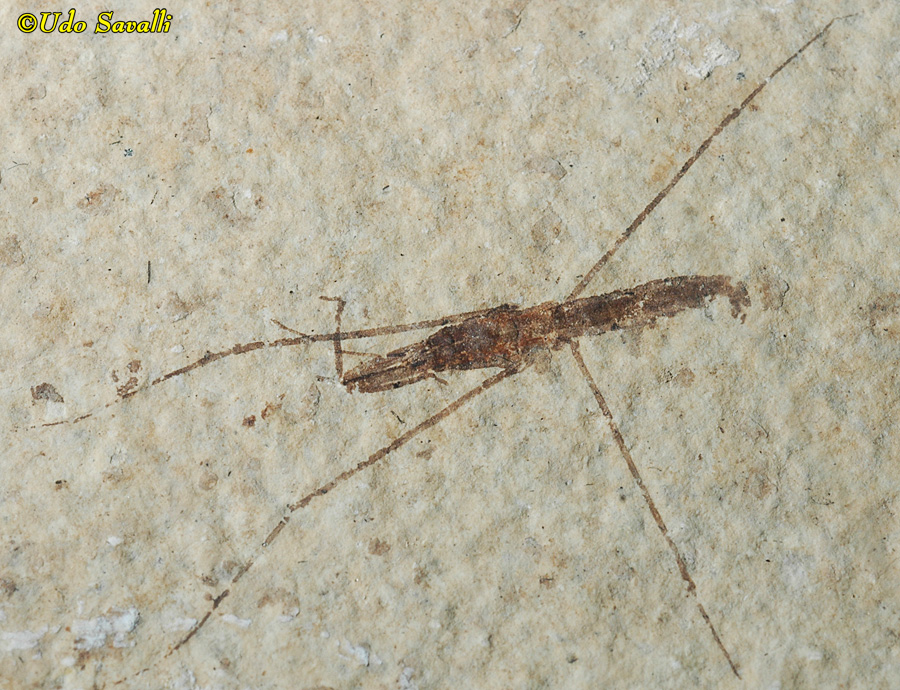
|
|
|
A Jewel Beetle (family Buprestidae).
Green River Formation, WY
Eocene Epoch, 48 Ma
Fossil Butte National Monument
|
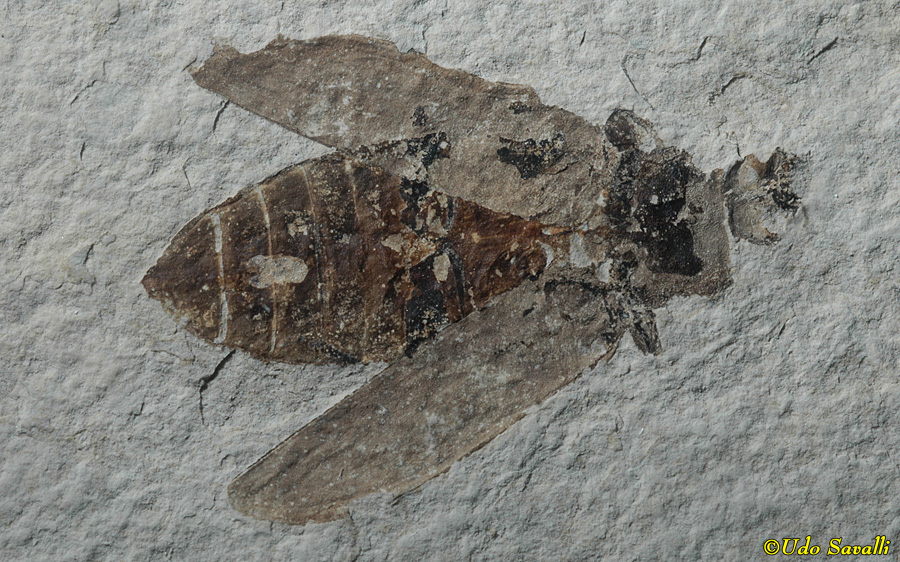
|
|
|
A robber fly.
Florissant Formation, Colorado
Eocene Epoch, 34 Ma
Florissant Fossil Beds National Monument
|
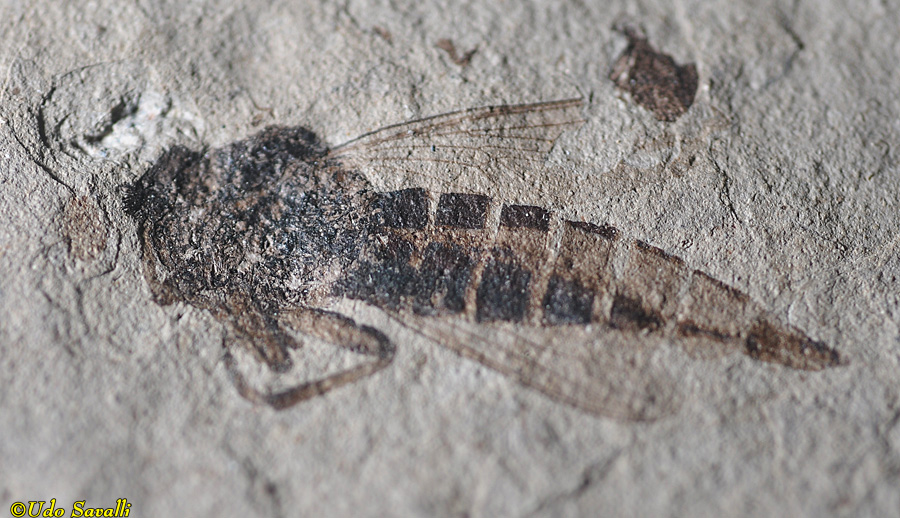
|
|
|
An unidentified insect preserving color patterns on its wings, along with some fresh-water clams.
Liaoning Prov., China
Early Cretaceous, Yixian Formation
Black Hills Institute Museum, South Dakota
|
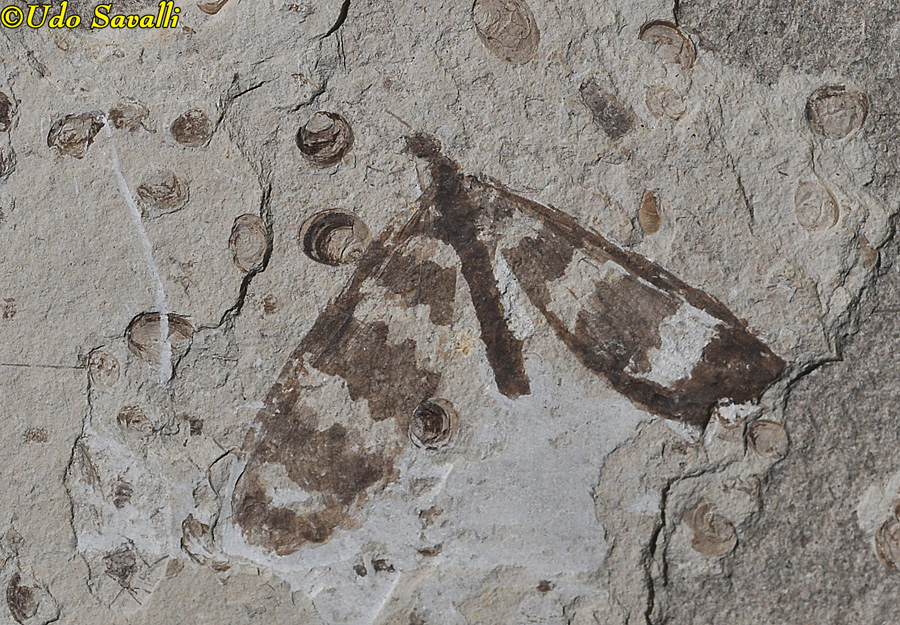
|
|
|
The nymph (aquatic juvenile stage) of an unidentified insect.
Liaoning Prov., China
Early Cretaceous, Yixian Formation
Black Hills Institute Museum, South Dakota
|
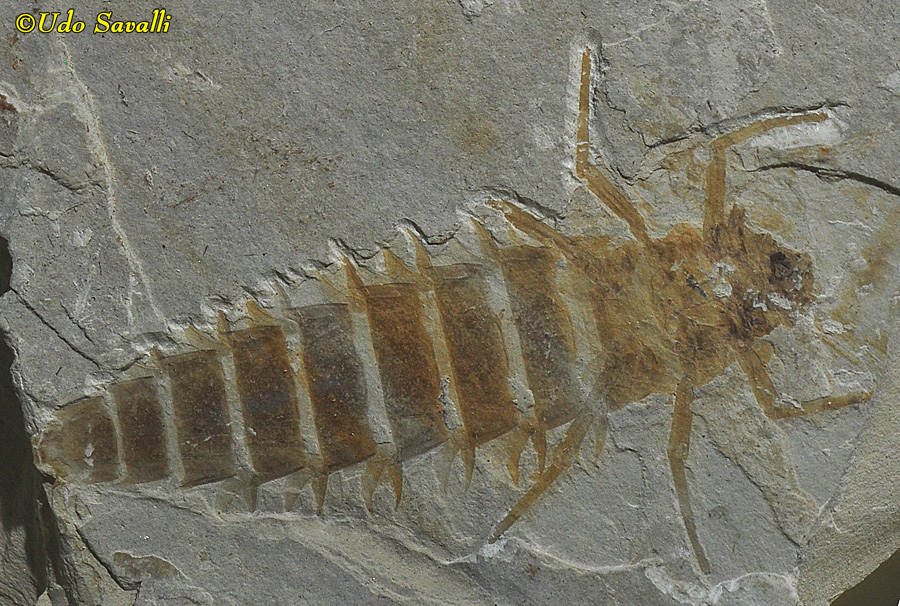
|
|
|
Meganeuropsis sp. is the largest known insect of all time with a wing span up to 70 cm across and a total legth of 43 cm. Although it resembles a giant modern dragonfly, it belonged to an extinct order of insects
Carboniferous Period, Pennsylvanian Epoch
Fernbank Museum of Natural History, Georgia
|
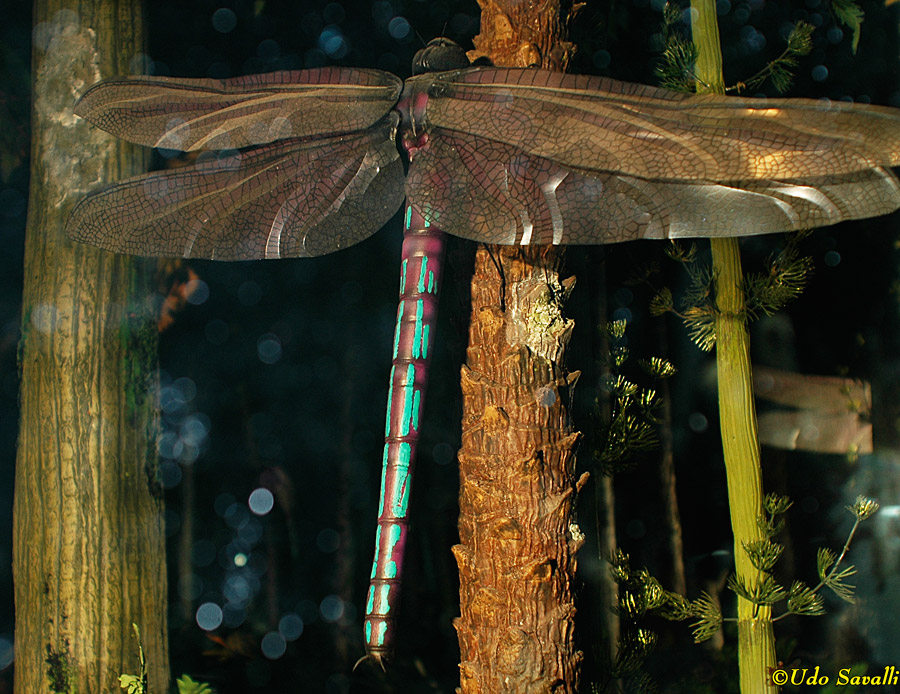
|
|
|
Meganeura sp. was another giant insect related to modern dragonflies. Its wingspan reached up to 70 cm across. The large size was probably possible due to higher oxygen levels at the time.
Carboniferous Period, Pennsylvanian Epoch, 295 Ma; Kansas
Black Hills Institute Museum, South Dakota
|
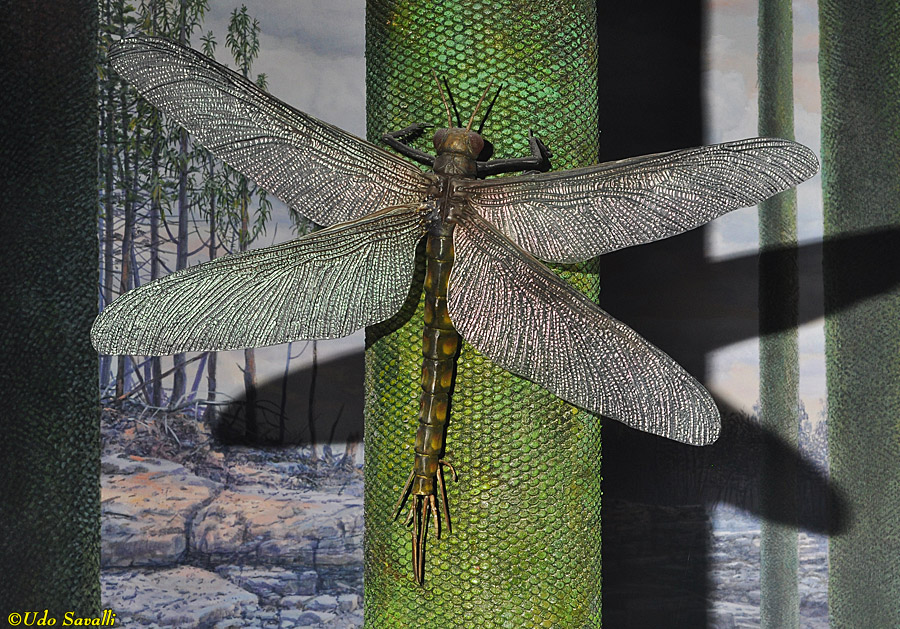
|
|
|






































